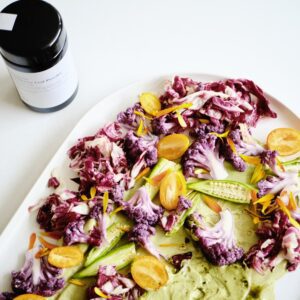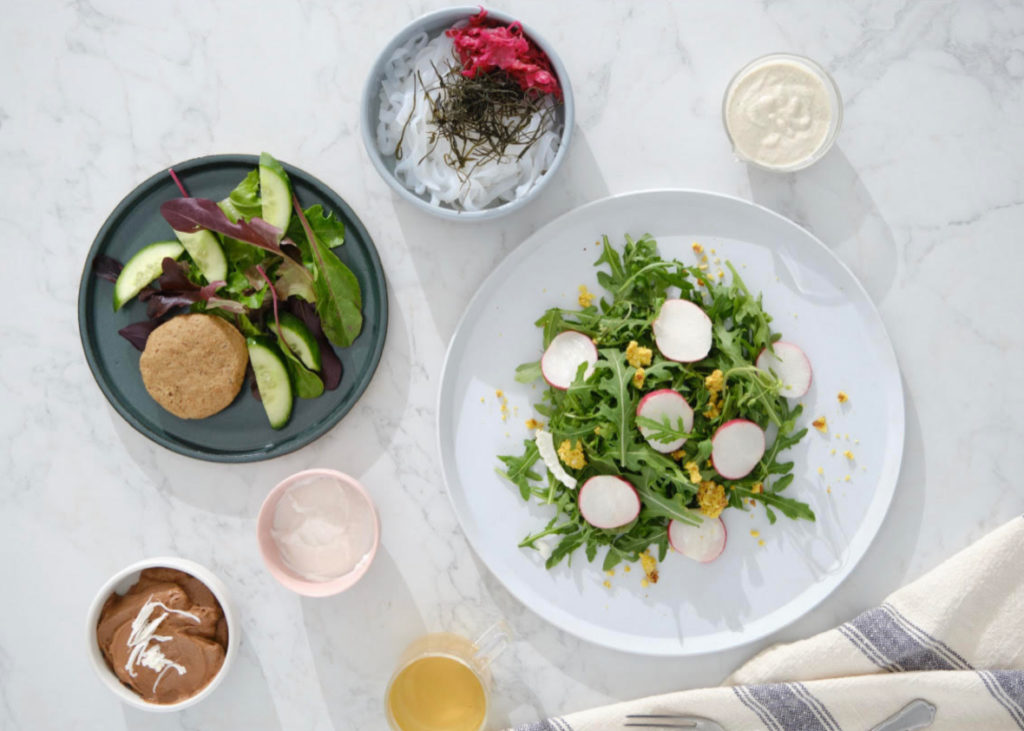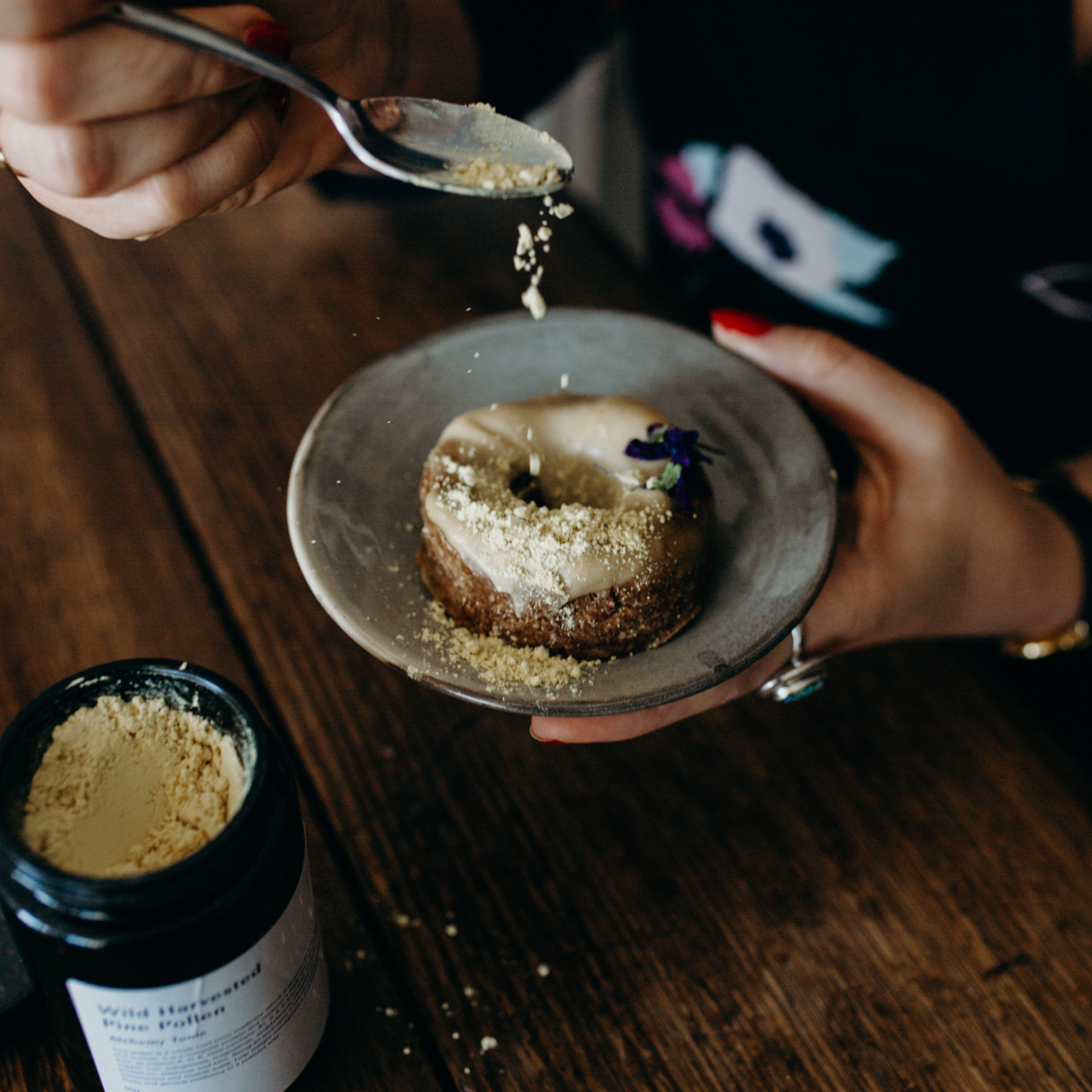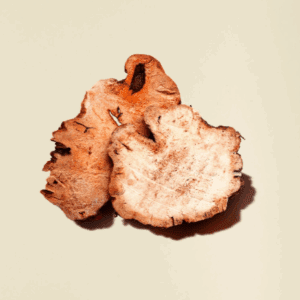
Coconut Yoghurt Cream with Mustard & Mulberry Leaf Powder
If you’re looking for a natural way to support blood

Kick-start, energise, rejuvenate
All carefully planned and prepared to help nourish, reset and rejuvenate the body and mind.

If you’ve ever cooked with herbs, you know that taste is an essential factor in choosing which ones to use. This principle holds true in herbal medicine as well. The taste of an herb provides significant insights into its medicinal properties.
The Importance of Taste in Herbal Medicine
Taste is a sensory experience that herbalists and plant enthusiasts cherish. It offers a wealth of information about the medicines we work with. Plants have developed unique flavours through the production of diverse phytochemicals. These flavours not only affect our taste buds but also impart aromas and sensations that signal the presence of specific constituents within the plant. These constituents initiate changes in our bodies. For instance, bitter herbs stimulate saliva production, salty herbs direct energy to our kidneys, and pungent spices enhance circulation. The acids in sour fruits bring cooling flavonoids or antioxidants, while sweet herbs are nourishing due to their carbohydrate content.
Exploring the Tastes of Herbs
While most traditions recognise five basic tastes—spicy, sweet, bitter, sour, and salty—there are variations, such as the inclusion of astringency. Each taste offers unique energetic properties:
Spicy/Pungent:
Spicy or pungent herbs are characterised by their warming, moving, and drying properties. These herbs stimulate circulation and invigorate the senses, making them ideal for enhancing digestive action and promoting respiratory health. The energy of spicy herbs is associated with the elements of fire and air, which help disperse energy outward. This is why consuming spicy foods like cayenne or horseradish can induce sweating, a natural way to release excess heat from the body. Common spicy herbs include black pepper, ginger, garlic, cinnamon, and cayenne.
Sweet:
Sweet herbs are known for their building, nutritive, and balancing qualities. The sweet flavour is subtle and often found in grains and roots. These herbs are energetically upward, meaning they help tonify and energise the body. Sweet herbs are often anti-inflammatory and demulcent thanks to their high content of polysaccharides. They nourish and support the body’s systems, making them ideal for recovery and stress adaptation. Examples include American ginseng, licorice, and astragalus, as well as blood-building herbs like red clover and burdock.
Bitter:
Bitter herbs have a calming, cooling, and clearing action. The bitter taste has a downward and drying effect, helping to clear heat and inflammation from the body. Bitters stimulate bile production, aiding digestion and elimination. They are known to increase appetite, enhance digestive enzyme production, and balance blood sugar levels. In traditional medicine, bitter herbs are often considered “true stimulants” due to their profound effects on the digestive system. Common bitter herbs include dandelion, blue vervain, and motherwort.
Sour:
Sour herbs are cooling and astringing, with a directional energy that moves inward and downward. This flavour is often associated with cooling and refreshing qualities, similar to the effect of lemonade on a hot day. Sour herbs help bind excesses and protect tissues with their antioxidant properties. They are effective in cooling the body and providing protection against oxidative stress. Herbal examples include acerola, sumac, and Schisandra, while common sour foods include vinegar and most fermented foods.
Astringent:
Astringent herbs are cooling and drying, often recognised more as a sensation than a taste. They are known for their ability to tone and tighten tissues, making them useful for excessive dampness, such as diarrhoea or excessive sweating. The presence of tannins in astringent herbs contributes to their drying effect, helping to tone inflamed or boggy tissues. Examples include witch hazel leaf, black tea leaves, and blackberry root.
Salty:
Salty herbs have cooling, moistening, and softening properties. This flavour directs energy downward, specifically targeting the kidneys. Salty herbs are often mineral-rich, providing essential nutrients and aiding in fluid balance. They can soften hard swellings and act as diuretics. Common salty herbs include dandelion leaf, chickweed, plantain, and nettle, while seaweed and kelp are also popular salty foods.
Acrid:
Acrid herbs are warming, moving, and dispersing. This flavour is more of an experience, provoking a reaction in the tissues that feel warm and tingling. Acrid herbs are often used to release patterns of tension and have a profound physiological effect, even in low doses. They are typically antispasmodic, helping to relax muscles and relieve tension. Examples include lobelia, kava kava root, and cramp bark.
Bland:
Bland herbs are neutral and moistening, often acting as diuretics due to their ease of movement through the body. They are typically demulcent, providing a slippery texture that soothes and protects mucous membranes. Bland herbs like oat straw and corn silk are gentle yet effective in supporting urinary health and overall hydration.
Why We Avoid Capsules
Herbalism, to me, is cultivating a conscious relationship with the plant world.
Touching, thinking about them, being drawn to certain herbs, and tasting them
Instead of taking them like multivitamins i like bringing them in to my life like rituals, and to the kitchen.
Encapsulating herbs removes the sensory experience and the immediate feedback that taste provides. By consuming herbs in their natural form, you engage with their full spectrum of benefits, from flavour to energetic properties. This direct interaction enhances your understanding and connection to the herbs, allowing you to harness their full potential.
By tasting herbs, we can better understand and appreciate their effects, encouraging the body to be ready to receive them.
If you have an extreme aversion to certain herbs’ tastes, it may just be your body’s way of telling you that you may want to find something else with similar health effects.
I hope you will see herbs and botanicals as your ally and guide, bring them into your rituals, and form a relationship with them.
Drink it as tea, and add it to your foods and beverages. Play with your foods and herbs together as a creative and intuitive process.

If you’re looking for a natural way to support blood

Despite growing threats to our well-being, the human longing for

There are herbs and mushrooms that make waves in the
Copyright Shoku Iku © 2024 | All Rights Reserved.
The statements on this website have not been evaluated by the TGA or FDA. These products are not intended to diagnose, treat, cure or prevent any disease.
Sign up to receive your discount.